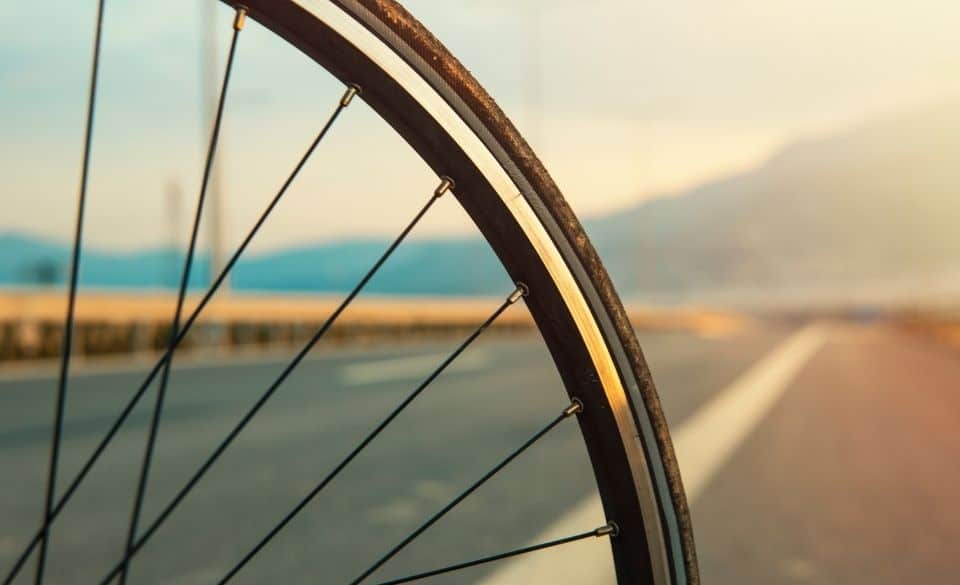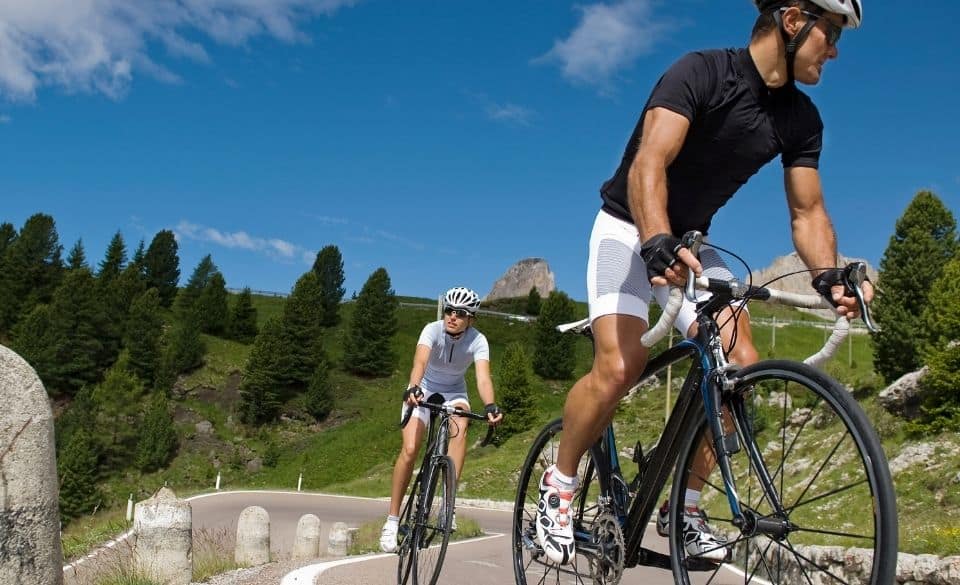
Bicycle Rolling Resistance – A Complete Guide To Bike Tire Rolling Resistance
Page Contents
Rolling Resistance, put simply, is the amount of energy that needs to be supplied to your cycle’s tires to maintain consistent speed over a surface. It encompasses all of the forces working against your bicycle moving forward – weight, gravity, inertia, and the friction between the tires and the road surface.
Given the highly competitive nature of pro-cycling, designers and bike manufacturers are constantly working to remove every ounce of resistance to provide an edge to athletes, and help make the most of human ability and performance.
In this guide, we dive deep into the concepts of resistance, friction, gravity and more, to help you get a clear understanding of all the factors necessary for peak performance.
Bicycle Rolling Resistance – A Complete Guide
An ideal road bike tire would have no weight, friction or resistance, but unless there is a ground-breaking scientific discovery that completely alters our understanding of the world, such ideas would remain ideas.
Rolling resistance is a concept of physics referring to the loss of energy experienced when a tire comes in contact with the surface of the road. When the wheel rolls, the rubber material in the tire and it’s casing constantly undergo deformation. The energy needed for this deformation is absorbed and converted into heat, which is why your tires get warm as you ride.
The main cause of bicycle rolling resistance is hysteresis. Pneumatic tires are used in cycling because of their ability to absorb the unevenness of terrain. The surface on which the tire is riding, and the deformation ability of the tire contribute to hysteresis. When the tire moves under the rider’s weight, it undergoes deformation and recovers energy in continuous pattern, dissipating the loss of energy as heat.
Hysteresis is attributed to the viscoelastic nature of the rubber. The energy needed for the deformation of the tire as it rolls on the road is higher than the recovered energy, contributing to rolling resistance. Rolling resistance is essentially the change in energy. When a rider pedals, he achieves speed but rolling resistance and air resistance together hold him back.

Bike Tire Rolling Resistance – How It Works?
Aerodynamic drag is the strongest force working against cyclists as they pedal, while rolling resistance is the next significant factor. During a typical ride on a road bike, the aerodynamic drag accounts for 70% of the force holding you back while about 20% can be attributed to rolling resistance.
Other factors like bearings, chain rubbing and more contribute around 10%. This means, rolling resistance makes a significant dent on your performance, and is something that must be looked into to maximize results.
The energy loss from tire contact is linear. The faster you ride, the bigger it gets. Less loss of energy means you can move at the same speed expending less energy or you can ride at a greater speed without much effort. As an example, a decent tire rolling resistance results in 30 watts at a speed of 20 miles / hour, this means saving 3 watts lets you carry about 500g more weight with you. This is the reason you should give a lot of consideration to tires used while racing.
The more the tire material deforms, the higher is the rolling resistance. Tire width has therefore become a hot topic among cyclists in the past years. When inflated to the same pressure, a wide and a slim tire have a similar contact surface, but the shape of the contact patch is different.
A wide tire has a broad, short contact patch while a narrow one has a slim, long contact patch. The longer area of narrow tire results in more loss of roundness of the wheel and produces more deformation. A wider tire has a shorter length which helps it roll quickly and stay rounder.
Bike Tire Rolling Resistance Chart
There are several factors contributing to rolling resistance of a bicycle. However, the rolling resistance force is calculated as:
WRR = CRR x M x G x V
where,
CRR is the rolling resistance coefficient
M is the mass of the rider and cycle
G is gravity and
V is the velocity of the cycle
All tires have a rolling resistance coefficient. Lower the value of CRR for the tire, lower the energy required to overcome the rolling resistance force. This is why the type of tires used probably decide the finishing time more than anything else.
Bicycle Tire Rolling Resistance Chart
The bicycle tire rolling resistance chart is comprised of the energy consumption level based on the brand and model of tires used.
The Addix Pro-One TLE Schwalbe tire, the TT Velo P-Zero Pirelli tire, the Grand Supersonic Prix continental tire consumes 10.2 watts. Brands and models like the Power time trial Michelin, the TLR Corsa Speed Vittoria tire, and the Pro-One Schwalbe tire consume 8.6, 7.0, and 7.5 watts, respectively.
Tires with higher consumption of energy are the Re-fuse Maxxis tire (22.6watts), the Gatorskin continental (19.3 watts), the Power all Season Michelin (21.3 watts), and the Hardshell Gator Continental (19.5 watts).
The Lugano ll Schwalbe and the Durana Schwalbe consumes 18.0 watts. Tires consuming 11.7 watts are the Yksion Pro Mavic, Grand Attack Prix ll Continental, and the Velo Race P Zero Pirelli. The Road Race Wolfpack tires use 12.1 watts, the Tangente Speed Zip uses 11.6 watts, the SES ENVE uses 11.4 watts, and the High Road Maxxis uses 13.2 Watts.
Inner Tube Rolling Resistance
The type and size of the tire is the most important factor deciding the rolling resistance. Inner tubes are available in a variety of materials to choose from. You can find butyl inner tubes in thick, thin and super thin variants as well as TPU, latex, and a lot more. Latex inner tubes have a lesser rolling resistance than butyl inner tubes, giving you a 0.2km/h improvement on a complete racing route.
Butyl inner tubes come in standard and lightweight versions of which the lightweight ones have quite a low rolling resistance and are compact, so it is easier to carry their spares. However, thinner walls are more susceptible to pinch flats and require maintaining inflation pressure. There is a higher risk of puncture with lightweight butyl inner tubes.
Latex Tube Rolling Resistance
Latex is the best material for inner tube tires as they are fast-rolling and much more supple. They give a lower rolling resistance as compared to other materials, allowing cyclists to ride faster for the same effort. One downside to using latex tubes is that they lose air every 24-hours, so you need to pump before every ride. They should also be kept away from oil and need caution not to be cut accidentally.
Comparative testing of inner tubes suggests that a latex tube offers a 7-watt saving over a butyl inner tube. The choice of the tube has a great impact on your rolling resistance as a thinner, more flexible, lighter tube creates lesser resistance. Though there are several new options available, thin latex tube remains the best choice.
Conclusion
This article is aimed to introduce the concept of rolling resistance which is ultimately important to a pro-cyclist. By managing your rolling resistance, you are working on your speed improvement by increasing your grip and saving wattage. In other words, you can ride faster with lesser energy. The understanding of rolling resistance and its effects on your cycling should help you perform better.



